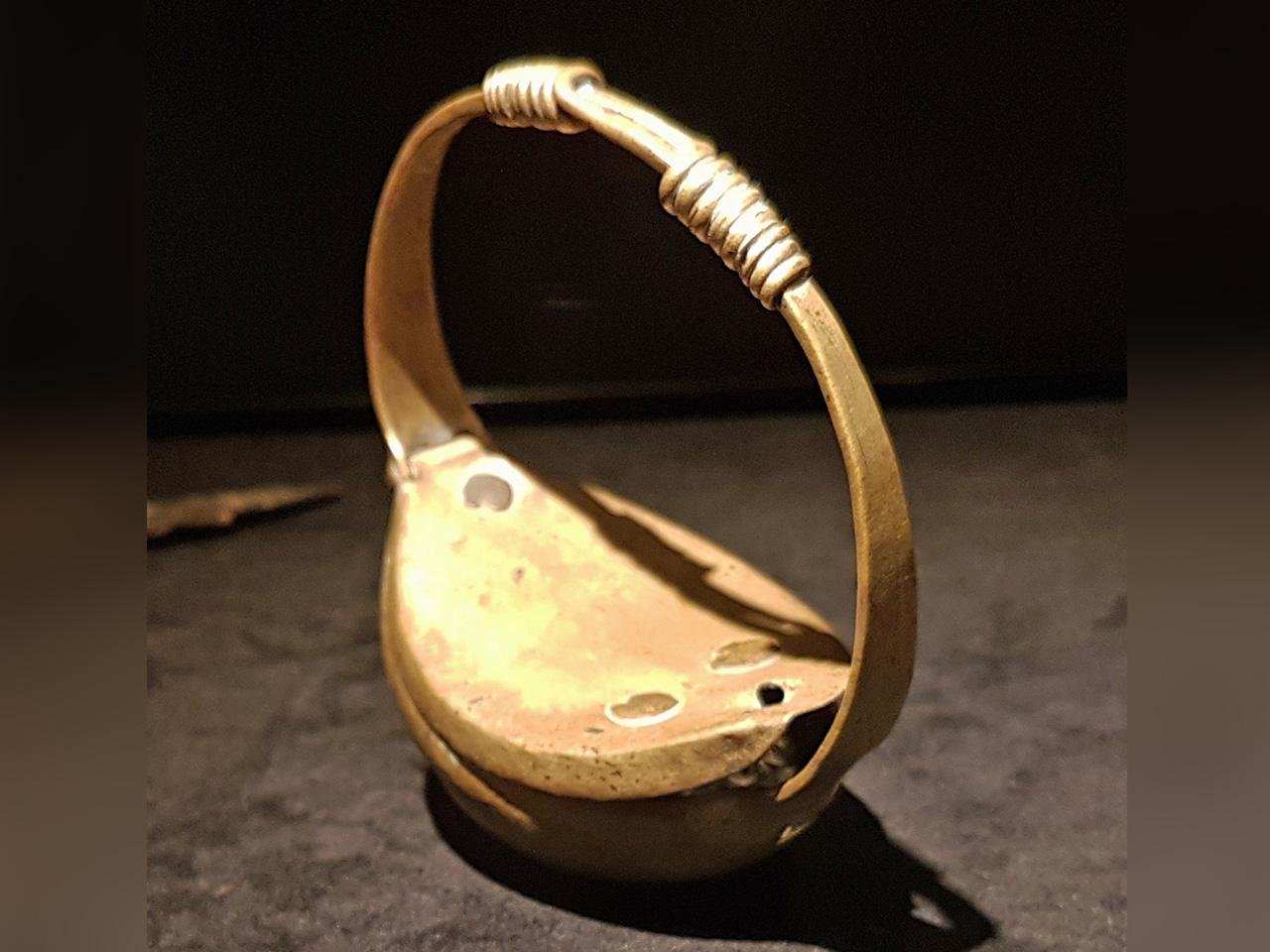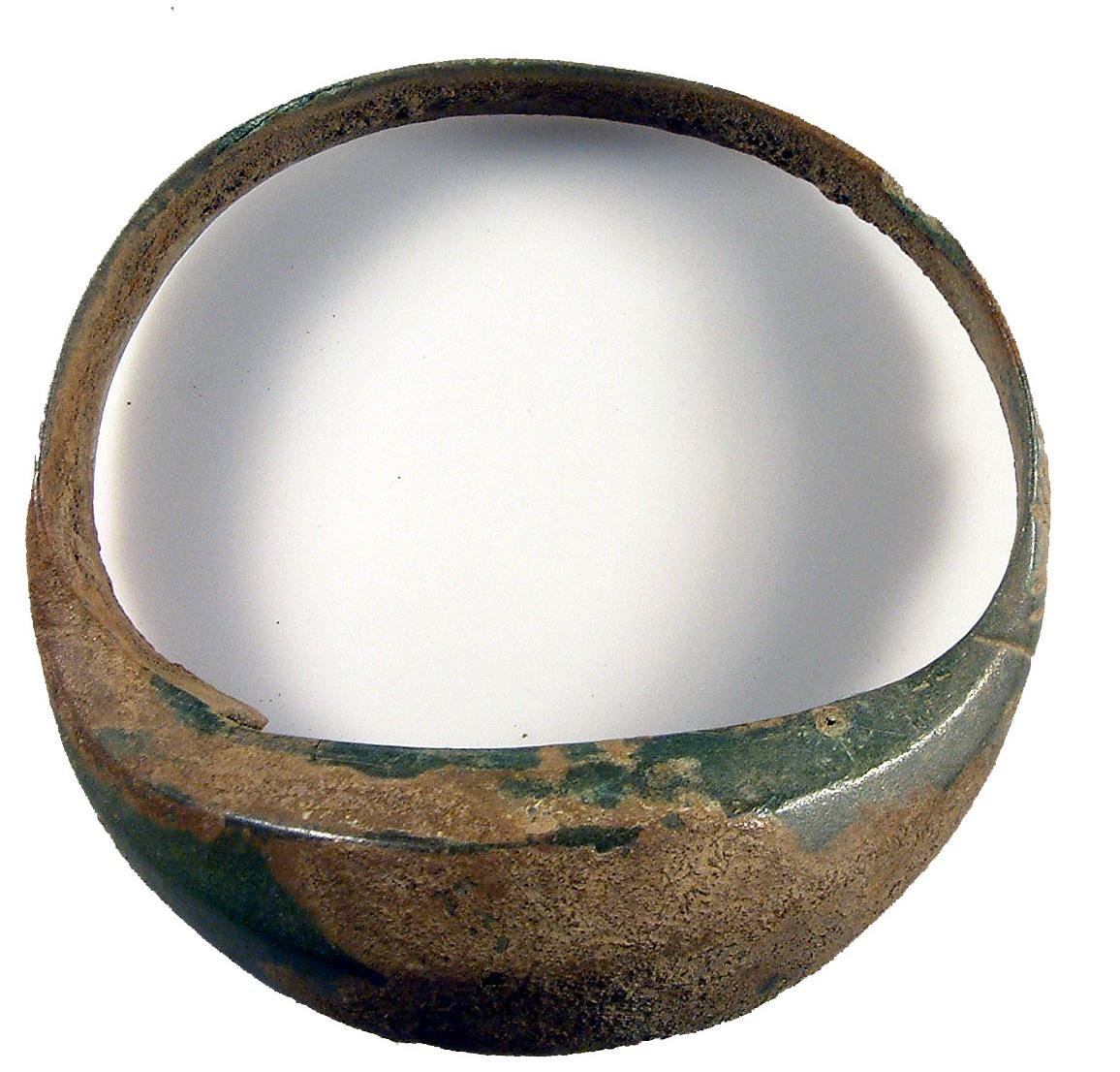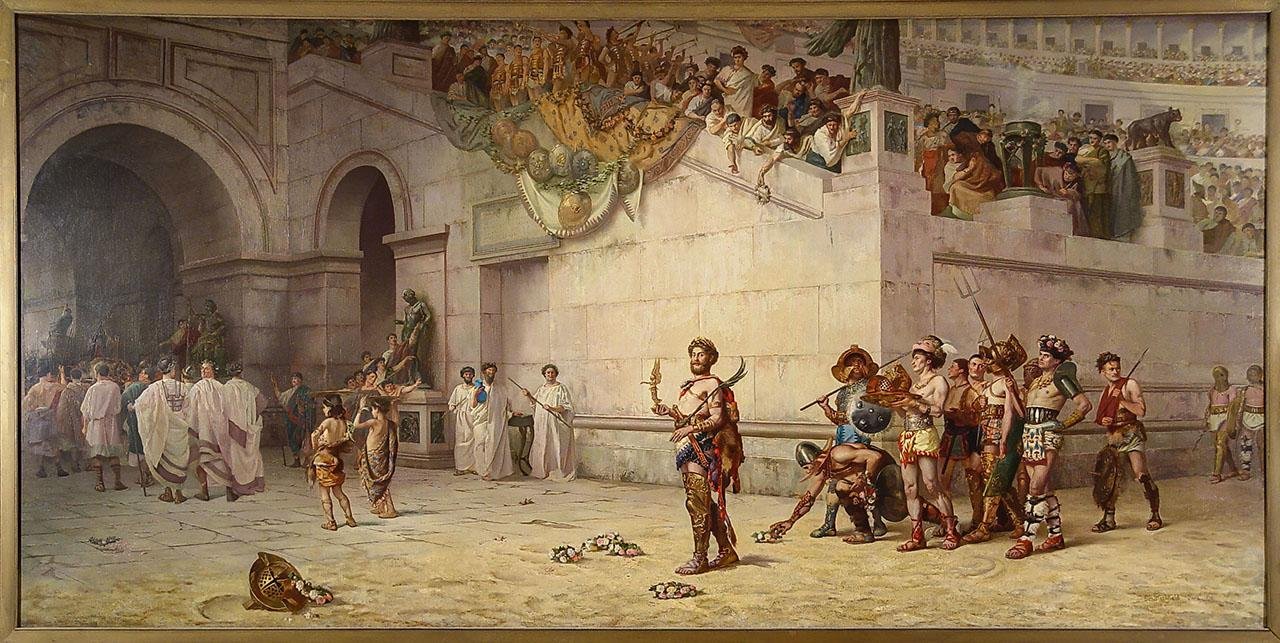Archaeologists in South Moravia in the Czech Republic uncovered a rare Roman military discovery—a fragment of a bronze wrist purse that is the oldest such discovery ever made in the Czech Republic. They discovered it on Hradisko Hill in January 2025 and dated it to more than 1,800 years old, offering a glimpse into the Roman soldiers’ private and logistical lives in the Empire’s outer frontier.
 A similar Roman bronze purse, 50–250 CE, found in Mook, Limburg, the Netherlands. Collection of the Rijksmuseum van Oudheden, Leiden. Credit: Kleon3 / CC BY-SA 4.0
A similar Roman bronze purse, 50–250 CE, found in Mook, Limburg, the Netherlands. Collection of the Rijksmuseum van Oudheden, Leiden. Credit: Kleon3 / CC BY-SA 4.0
The purse fragment was unearthed at the site of a temporary Roman military camp once occupied by the 10th Legion in the Marcomannic Wars of the late second century CE. Although only around 30% of the original item has survived, experts instantly identified it as that of a Roman warrior’s forearm purse—a small, tension-secured money pouch worn around the left arm to leave the right hand free for combat. The discovery is significant because it was made outside the formal borders of the Roman Empire, in territory once considered hostile.
Although no coins were discovered inside the purse, archaeologists unearthed a substantial number of silver Roman coins nearby. The coins, mainly from Emperor Marcus Aurelius’ reign and bearing images of the emperor or his wife Faustina, enabled researchers to date the artifact between 172 and 180 CE.
The purse is estimated by experts to have held up to 50 denarii of silver—a decent sum, but less than the annual pay of a common legionary. This suggests that the owner was a junior officer or someone responsible for the operating funds of the unit, often referred to as “service cash” for rations, equipment, and other logistical needs.
 A similar bronze wrist purse found in England. Credit: York Museums Trust / CC BY-SA 4.0
A similar bronze wrist purse found in England. Credit: York Museums Trust / CC BY-SA 4.0
The broader historical context gives the discovery additional significance. The Roman 10th Legion was stationed at Hradisko Hill during Marcus Aurelius’ campaign against the Germanic Marcomanni and other tribes such as the Quadi and Sarmatian Iazyges. The emperor had planned to make the region a new Roman province called Marcomannia, stretching from the Danube into what is now northern Moravia. But the plans were abandoned due to ongoing tribal resistance and Marcus Aurelius’ death in 180 CE.
His successor, Emperor Commodus, withdrew Roman forces from the region and negotiated a controversial peace. Although it ended hostilities in the short term, most historians regard Commodus’ actions as a turning point that weakened the frontier’s security and the internal stability of Rome.
 Commodus leaving the Colosseum, by American muralist Edwin Howland Blashfield (1848–1936). Public domain
Commodus leaving the Colosseum, by American muralist Edwin Howland Blashfield (1848–1936). Public domain
Currently, the bronze fragment is on display at the Mušov Visitor Centre in Pasohlávky in the exhibition Gateway to the Roman Empire. The display includes the original artifact, a full reconstruction of the purse, and a collection of Roman coins discovered nearby. Together, these items provide a rare glimpse into what the lives of Roman soldiers on the empire’s fringes were like.
You can view original pH๏τos of the finds by clicking here





